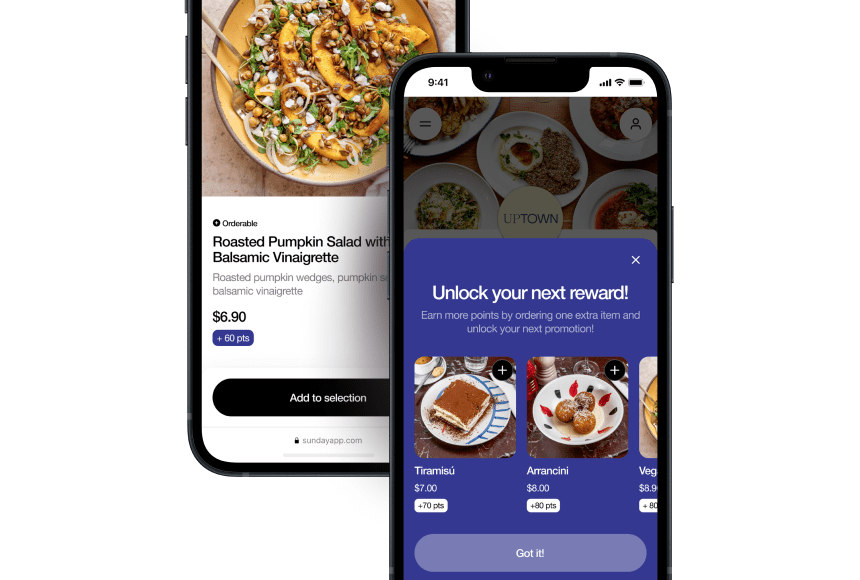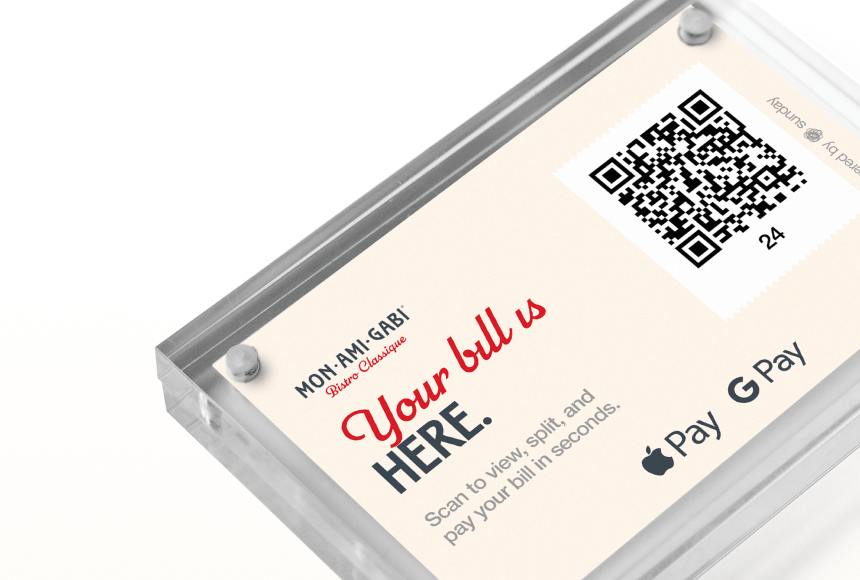
Manage Your Team Confidently With Smart Technology—and Zero Micromanagement
Why Staff Management Needs a Fresh Recipe
Every restaurant owner understands the balancing act: you want to keep an eye on employee performance without breathing down their necks every few minutes. Too much oversight can erode trust and autonomy; too little oversight can lead to inefficiency or missed opportunities. Striking that perfect balance often feels like trying to poach an egg at peak dinner rush—risky and prone to error.
Yet, the stakes are high. According to the National Restaurant Association, turnover rates in the U.S. hospitality sector regularly hover around 70% to 75%. That means you could be bleeding money and morale if your staff feels over-managed, under-supported, or stuck in inefficient processes.
The good news is that new technology can help you create a more empowering environment while still maintaining control. From software that optimizes your scheduling to modern payment solutions that free up your servers to focus on customers, carefully chosen tools can be the secret ingredients that ensure your restaurant runs smoothly—even when you’re not peering over anyone’s shoulder.
Below are three tech upgrades that can help you coordinate, monitor, and support your team in a way that boosts performance without diving into micromanagement territory. Ready to start cooking up some positive change?
1. Smart Scheduling and Team Communication Platforms
Picture this: you’re about to plan next week’s shifts, the phone rings off the hook with staff calling about availability, and you’re juggling spreadsheets and sticky notes to make sure everyone gets their hours. That’s a recipe for chaos. On top of that, no one likes 10-second check-ins every hour from their boss, especially if it’s just to confirm they showed up on time.
Enter smart scheduling platforms. These cloud-based systems let you easily build weekly schedules with accurate labor forecasts, and they often have integrated communication tools. Instead of texting or emailing each server individually, you post the schedule online, and all staff can view it in real time on their phones. A great scheduling platform will also allow employees to request time off, swap shifts, and signal availability changes without causing you a headache.
Why does this matter if you want to avoid micromanaging? Because giving your team an easy way to see—and control—their schedule fosters trust and autonomy. You handle the big picture, and they can work out shift swaps or replacements on their own, within reason. You stay informed but don’t have to meddle. All you do is approve requests as needed and focus on other tasks, like menu development or marketing.
Automating Time-Tracking and Attendance
Another benefit of these platforms is automated time-tracking. You can require staff to “clock in” and “clock out” via a mobile app or a designated terminal, generating attendance data in real time. Those records help prevent scheduling miscommunications—no more repeated phone calls asking whether a server is late. Instead, you open your dashboard and instantly see who’s clocked in.
Automated data collection also helps you:
- Adhere to labor laws: The system can alert you if someone is about to hit overtime hours.
- Spot patterns: If you notice repetitive tardiness from a staff member, you can address it directly instead of constantly hovering.
- Cut payroll errors: Fewer manual entries mean fewer mistakes on paychecks.
That’s key to avoiding micromanagement. Instead of calling each server to confirm their shifts, you see real-time data in a central location. This reduces friction, saves time, and keeps everyone aware of expectations without needless back-and-forth.
A Case Study in Scheduling Success
Imagine “Riverside Bistro,” a bustling neighborhood restaurant. Chef Alex found himself constantly asking servers if they were coming in for their shift. A scheduling app changed everything. Once the staff had the app on their phones, they knew the exact shift requirements and responsibilities. Swaps and replacements required one click. Management saw who was on duty, and Chef Alex noticed staff morale improve. Without having to chase employees for minuscule updates, Alex focused on refining the menu and wooing customers.
2. Modern POS Systems With Real-Time Analytics
It’s no exaggeration to say the POS (Point of Sale) system is the heartbeat of a restaurant’s day-to-day operations. From order entry to payment processing, a good POS ensures your floor staff can handle transactions quickly and accurately. But if you’re only using your POS as a glorified register, you might be missing out on the hidden advantage of real-time analytics.
One major trap that leads to micromanaging is lack of information. If you don’t have clear data about how your servers and kitchen staff are performing, you might overcompensate with constant supervision. The solution? Put your POS data to work so you can get a live feed of sales, labor costs, table turnover, and even tip distribution.
Actionable Insights Drive Autonomy
A modern POS can be set to provide dashboards with up-to-the-minute performance metrics. Want to see which server is ringing up the most dessert sales? Need to know your revenue per labor hour for the current shift? It’s all in your POS.
With this clarity at your fingertips, you can spot small issues before they blow up into full-scale problems. Rather than micromanaging your staff for every detail—“Are you upselling enough sides?” “Did you check that table again?”—you can periodically review the data. If you see dips or anomalies, you step in with targeted advice or extra training. You’re not hounding your crew all night; you’re using objective numbers to point out areas that need attention.
Reducing Errors and Streamlining Communication
Modern POS systems also reduce human errors that often occur with pen-and-paper orders. Less confusion means fewer mistakes sent to the kitchen, and that improves morale on both sides. Additionally, communication between front of house and back of house becomes more streamlined, because the POS sends orders directly to each relevant station—bar, grill, salad, and so on.
This streamlined workflow eliminates the need for managers to hover in the kitchen, verifying each ticket hasn’t been lost. Autonomy goes up, stress goes down. If a particular order is delayed, you’ll see that in real time and can ask the right questions without continuously monitoring everyone’s steps.
A Quick Example: Data in Action
Back to Riverside Bistro—Chef Alex introduced a modern POS system that delivers real-time data on each server’s sales, order times, and tip amounts. He quickly noticed that stalling tickets in the middle of dinner service were always happening on Thursdays. A quick look at the analytics revealed fewer staff members were scheduled on busy Thursday nights, causing the kitchen to fall behind.
With that knowledge, Alex added one more line cook for Thursdays, and the backlog disappeared. No ongoing micromanagement was needed—just analyzing the data, making an informed decision, and letting the newly reinforced team find its groove.
3. Automated Payment and Feedback Solutions
Restaurant owners are often caught between wanting to deliver personal service and wanting to ensure every table is well-monitored. If guests are left waiting for the check or if servers forget to present the bill quickly, you might be tempted to intervene in every interaction. But checking in on that can feel intrusive and create awkward staff-customer moments.
One answer is automating parts of the payment process. If you’ve ever eaten somewhere that used QR code payments on the tabletop, you’ve seen how it can reduce friction. Platforms like sunday allow restaurant guests to scan a QR code, view their bill, add a tip, and complete the payment—no server required to stand by with a payment terminal. As an owner, you get to ensure that crucial part of the customer experience is handled smoothly, without stationing yourself at every table to confirm that checks are processed.
The Tip Advantage and Google Reviews
Automated payment platforms often integrate tipping options and sometimes even encourage customers to leave a Google review. This can max out your positive feedback cycle. Tips, in particular, are a vital component of staff satisfaction. When servers see diners tipping more often—and potentially tipping higher—they feel their efforts are appreciated, which in turn can reduce turnover.
But why is this better than traditional methods in the context of micromanagement? Because you don’t have to circulate on the dining room floor to see if your staff remembered to ask for a tip or politely request a review. The payment system does it automatically.
That said, personal interactions still matter. You want your servers to maintain a genuine connection with guests. By automating repetitive tasks like bringing the check, printing receipts, and explaining tip options, your staff gains the freedom to offer real hospitality instead of hitting predetermined prompts. The result is better guest interactions without you constantly reminding them to upsell or handle payments more efficiently.
Ease of Setup and Staff Empowerment
Quick adoption is crucial. A complicated process requiring hours of training can lead to frustration. Automated payment solutions worth their salt will feature user-friendly interfaces so any new hire can pick them up. Once you implement a system like sunday:
- Servers focus on people, not receipts: By minimizing back-and-forth with payment terminals, staff can spend more time engaging with customers and upselling menu items when it makes sense.
- Guests gain control: They can pay whenever they’re ready. Freedom leads to higher satisfaction and, often, better tips.
- Instant feedback: If the solution nudges them to leave a review, you collect valuable insights and boost your online presence without an extra marketing push.
You manage your employees less, because the technology handles the transactional elements. That matters for striking the perfect balance between mindful oversight and letting each team member shine.
Results: Less Stress, More Retention, and a Better Bottom Line
When you combine these three upgrades—smart scheduling, a powerful POS with real-time data, and automated payment solutions—you’re setting the table for a well-run operation. Let’s recap the benefits that help avoid micromanagement:
- Clear staff coordination: Scheduling platforms allow team members to manage their shifts, reducing confusion.
- Objective performance data: Modern POS systems provide real-time insights, removing guesswork and lowering the urge to hover.
- Streamlined payment and feedback: With automated checkouts, your staff can focus on guest experiences. Tipping and reviews become a natural part of the process, not an awkward add-on.
That’s the recipe for success. You’re not abdicating your responsibilities. Instead, you’re empowering your staff to take the initiative. They know what’s expected, how to do it, and that you trust them to carry out their duties without micro-check-ins.
Chef Alex found this golden trifecta at Riverside Bistro. Within months, the restaurant saw an increase in average guest check size—upselling soared when servers had more bandwidth to chat with customers about specials and dessert. Turnover dropped, too, because employees felt they had the tools to manage their responsibilities better.
Grinding the Numbers: A Small Data Table
By implementing improved scheduling, POS analytics, and automated payments, restaurant owners often see positive shifts in key metrics. Here’s an overview of some average results after six months of deploying these solutions:
| Metric | Before Tech Upgrades | After 6 Months |
|---|---|---|
| Staff Turnover Rate | 75% | 60% |
| Average Tip Percentage | 15% | 18% |
| Time Spent on Scheduling Weekly | 4 Hours | 1 Hour |
| Average Table Turnover Rate | 10 Tables/Hour | 11.5 Tables/Hour |
These improvements may seem modest at first glance, but when multiplied across days, weeks, and years, they translate into significant savings on labor, higher revenue, and—most importantly—less stress for owners and managers.
Bringing Everything to the Table
A successful restaurant is about harmony. Food, service, ambiance, and management all work in sync to create an unforgettable experience for everyone involved. Technology should serve as a tool that fosters this harmony, not as an intrusive mechanism that makes employees feel like they’re always on watch.
Equipped with the right digital platforms—smart scheduling, powerful POS analytics, and automated payment and feedback solutions—you can give your team the freedom to focus on what really matters: delivering great service and mouthwatering meals. You rarely need to hover over shoulders because real-time updates and analytics do the heavy lifting. In short, you become the orchestrator, not the taskmaster.
When your staff feels supported rather than supervised, they stay longer, perform better, and ensure every guest leaves satisfied. And when you trust your team with the right mix of guidance and independence, you build a restaurant culture that can withstand industry challenges—from unpredictable foot traffic to labor shortages—without losing quality or morale.
FAQ: Restaurant Staff Management & Tech
Q1: Will these tech upgrades cost a fortune?
Most solutions are subscription-based, meaning you pay a monthly fee. While this adds to your expenses, the right software often pays for itself through labor saving, error reduction, and increased efficiency. Check out resources like Restaurant Dive for the latest news on competitive pricing and industry-standard solutions.
Q2: How do I get my team on board with new tools?
Involve them in the selection process if possible, and reassure them that the technology is an aid, not a spy camera. Provide short, focused training sessions and emphasize the benefits—fewer scheduling conflicts, easier communication, and a smoother payment process for guests.
Q3: Are there any privacy concerns with staff data?
Most scheduling and POS platforms store employee information in secure systems. Make sure you choose reputable providers. Review their privacy policies and be transparent with your team about what data is collected and how it is used.
Q4: How do I integrate these tools if I already have a POS system?
Many modern platforms are built with integrations in mind. Ask your current POS provider about compatibility with scheduling or payment automation software. Switching providers might feel daunting, but the long-term benefits can justify the short-term hassle.
Q5: Will automated payment systems reduce the personal touch for customers?
They shouldn’t. Automation frees your servers to focus on conversations, food recommendations, and genuine hospitality. Guests who prefer a more traditional experience can still pay through the server. The key is to offer convenience, not remove personal connections.
Smart upgrades free you from the endless cycle of manual checks and repeated staff reminders. They empower both you and your employees to shine. Now’s the time to consider what mix of tools best fits your restaurant—and put yourself on a path toward happier staff, satisfied customers, and a healthier bottom line.
Find out more today
Drop us your details below and we’ll reach out within the next 24h
Get the full, detailed picture.
sunday elevates your business with insightful data, instant feedback and precise analytics.




